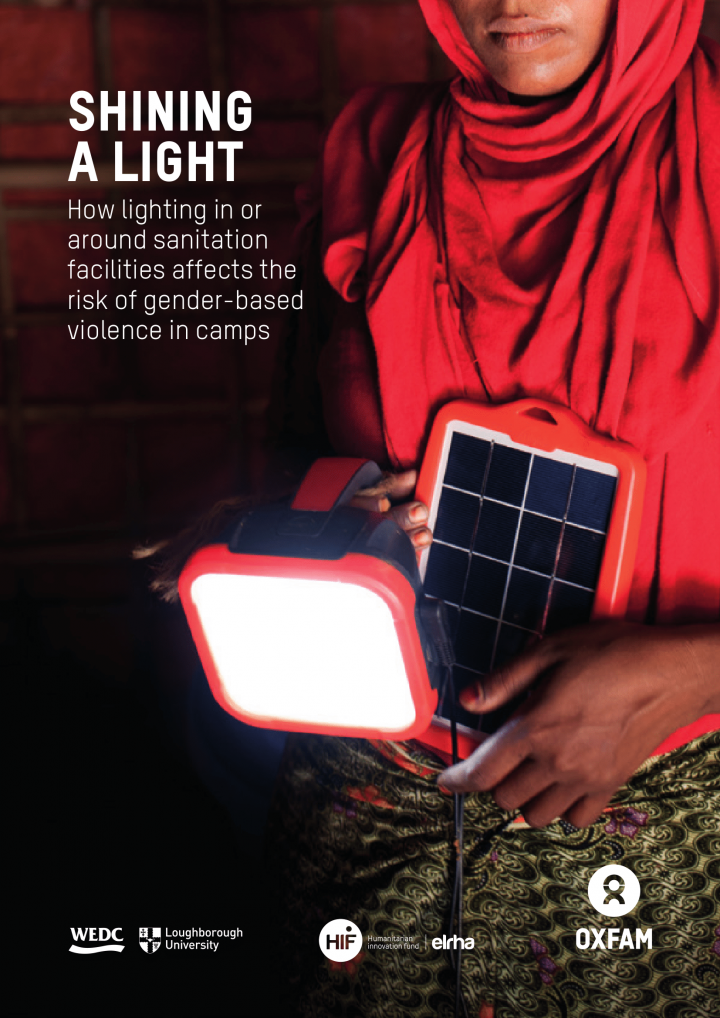Shining a Light - How lighting in or around sanitation facilities affects the risk of gender-based violence in camps (in English and French) Oxfam, HIF, WEDC (2018)
Camps are places of refuge for people fleeing conflict and disaster, but they can be dangerous, especially for women and girls. In their first months, many camps rely on communal sanitation facilities – a quick and cost-effective way of meeting immediate needs and minimizing public health risks until a better solution can be developed.
In 2016, the Humanitarian Innovation Fund (HIF) set up a research challenge asking: Does lighting in or around sanitation facilities reduce the risk of gender-based violence (GBV)? During 2017 and 2018, Oxfam and researchers from the Water, Engineering and Development Centre (WEDC) at Loughborough University carried out research to try to answer this question. This report presents the main findings from this research.
Bibliographic information
Oxfam, HIF, WEDC (2018). Shining a Light - How lighting in or around sanitation facilities affects the risk of gender-based violence in camps (in English and French) Oxfam, HIF (Humanitarian Innovation Fund), WEDC (Water Engineering and Development Centre, Loughborough University), UK
Filter / Tags
Camps (emergency or longer term)PractitionersEnglishFrenchWomen's rights & representation and empowermentSexual and gender-based violence

